A lyrical meditation on the nightingale's song intertwines with reflections on colonialism, reparations, and humanity's shared responsibility to protect both cultural heritage and the natural world.

I heard the nightingale sing - rise up, rise up, sing out. So pure a song, so full of nuance, richness and at times lament. I heard the nightingales sing under a bright moon shining through rain clouds deep in the heart of Sussex. Their song connected me back to all my Sussex ancestors. So many of them who worked this land would have heard their song in April and May. During the courting months, they made love as these songs rang out across the night.
I was in the company of folk singer and author Sam Lee, and Kora player Josh Doughty. Sam has been running the Singing with Nightingales events for nearly 10 years. I’d had tickets to attend in 2020, but the pandemic cancelled those plans. I’ve seen Sam play in Brighton a couple of times and walked up to Hollingbury Camp Hill Fort one Friday morning with him and a few Friends of the Earth to listen to the lark ascending. I’d bought a copy of his book The Nightingale, and while I was healing from a deep illness last year and could read a book again, I picked it off the shelf. I promised myself, that when I was fully recovered, I would seek out a nightingale to hear its song.
And so it came to pass. We gathered by the fire before a dusk walk through the bluebell woods near Barcombe, East Sussex. The evening chorus accompanied our silent walk, listening to multiple birds, but not yet the nightingale, who prefers to start up later in the night and sing until dawn. They do continue during the day, but the song is not strong, not so urgent. They are night birds.
Sam told us how the bluebells were originally a field flower that had retreated to the woods. The wild boar no longer roams free in the woodland (apart from the Forest of Dean where they have been reintroduced), so the bluebells are no longer foraged and kept at bay by those wild animals. Their scent and deep purple-blue were divine in the gloaming and I remembered the armfuls I would pick as a child when my mother took me into the South Downs near Chichester for a picnic. Nick, the farmer who tends these lands and woods, stopped by and told us how he coppiced the hornbeam that thrives here. Hornbeam is a hard, resilient wood, which burns extremely hot. Its charcoal is good for the iron industry of the Weald near to here. An appropriate choice, I thought, for my Freya - a ‘god-dolly’ - who I made from hornbeam from Stanmer Park. A branch from the pair of hornbeams under whose canopy I journeyed with the runes to understand their meaning.
Back by the fire, after we were well fed and watered, Josh told us of his journey with the Kora, an African harp from West Africa, where the nightingale winters after nesting across Europe, and of course Sussex. Like the nightingales, he travels back and forth between the two continents. The Kora has a beautiful, melodic sound, and I found myself drifting with the fire flames as Josh played. A barn owl screeched, and in the distance, Sam heard the first of the nightingales waking up. He sang us a traditional Sussex song from the Copper family of Rottingdean before we geared up to wander out into the bush to seek out the nightingales.
People had gathered from far afield - West Cornwall, Cambridge, and Warwickshire to hear these glorious birds. Most of us had not heard or did not recall hearing one before. We bundled ourselves up against the now soft rain, and Sam led us into the dark, our eyes adjusting to the moonlight after the brightness of the campfire. As we walked towards the night chorus, the nightingales' song felt familiar. Maybe this was an ancient memory stirring in our DNA. It was wonderful to be phone-free, with no electric light, just the moon guiding our silent way.
Sam led us along an old railway track, until we came remarkably close to the bird we were tacking. I lay down on my sheepskin, the one that I’ve had since a child by my bed, and covered up in a warm blanket, let the waves of bird song, Kora music, and soft rain wash over me. It was a trance-like, timeless place of beauty and awe. That such a small brown bird had flown so many thousands of miles to find a mate and nest in the very spot it had been born. After a good hour or so of deep listening, we made our way back to the camp, the birds still singing into the night. I went to sleep with the sound of nightingales and rain on the canvas of the bell tent and dreamed of incredible buildings filled with jewels until the dawn chorus woke me up.
Over breakfast I somehow found myself talking about Rapa Nui (Easter Island), the stolen Moai statue now residing in the British Museum. How my great, great grandfather’s ship HMS Topaz, on its second voyage (he had sailed on her first four-year voyage but not on this tour) had docked at Rapa Nui, and the crew had stolen the Moai and brought him back as a gift for Queen Victoria. I remembered how I had wept when I saw him standing so sad and forlorn amongst the museum crowds, and knew he must be returned to his homeland. As I recounted this tale, a woman from Totnes said she’d met a woman on Rapa Nui, whose ancestral lineage this stolen Moai belonged to, and how she and her people yearned for his return.
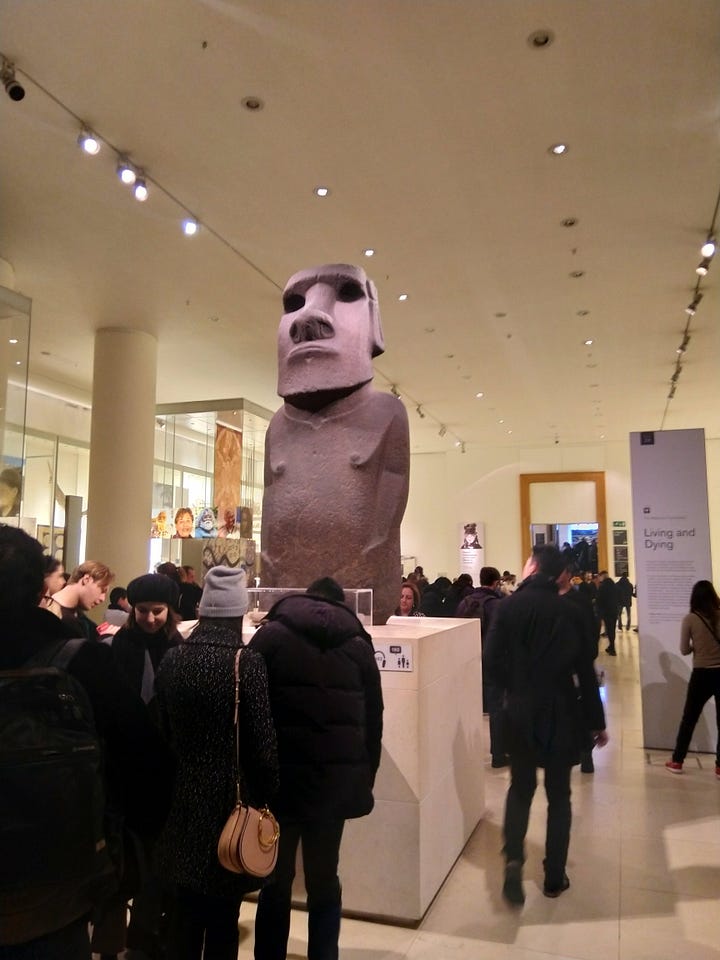

We talked about how museum artefacts often feel imprisoned in glass cages. The museum curator from Cambridge told us how she works with objects to bring them alive. So much loot from our colonial past resides in these venerable establishments. Much taken from West Africa too, through our slaving history. We discussed the resistance to returning these stolen artefacts, and what that would mean for our museums and important national collections. Why not create replicas of significant pieces and return the originals to their homelands? I feel the time has come for us to do this.
I was reminded of the campfire discussion the previous evening on ancestry, that had somehow moved from my Sussex ancestors listening to nightingales, to my distant Scottish uncles who were slave traders operating out of Liverpool in the 1700s. Their ships took the route of the nightingales to enslave West African nations, turning them into human capital to trade for tobacco and coffee in the Caribbean and America. This discussion on slavery felt awkward as the response, which I so often receive when I speak of the horror of this terrible history, was one of “Oh well, everyone was doing it at the time” and “Well, the Arabs were doing it too”, as this somehow excused our ancestors' behaviour as of its time; or that we have no responsibility in the present to make amends for the past. The attitude of “don’t tear down the statues of our colonial past - put up a notice instead, just label them for what they were and that is enough” is not one I subscribe to
I say tear them down, tear down the stone and bronze images of white male colonialists on pedestals and put THEM behind glass cases. In their place erect new statues, in remembrance of our lost species; of our heroines; of those we harmed, of those who fought for social justice and to protect our environment. Let us create a homage to the nightingale and its resilience, flying back and forth from Africa to Sussex for millennia. The ancestors of these nightingales that we heard would have witnessed the collective crimes our ancestors committed against the citizens of the West African coast. Still, their song rang out. A song of resilience. Those people brutally sold into slavery may have heard the nightingale sing in their homeland, a different song from the one we hear in Sussex.
Capitalism gave rise to British and European slavery economies, and capitalism is killing the nightingale. The dismissal of the horrors of slavery lumped in with a bygone era, felt jarring in the wake of our campfire discussion about the nightingale's threatened existence.
This seemingly disparate conversation about birdsong and human suffering revealed a powerful parallel.
Just as the nightingale's migration is disrupted by habitat loss caused by deforestation and intensive agriculture, so too was the freedom of countless West Africans stolen within a capitalist system built on exploitation. Colonisers forcibly removed individuals from their homes, severing them from their land, families, and everything they knew. Both the nightingale and enslaved people were exploited for the benefit of those in power. Forests are cleared to harvest resources, while West Africans were brutalised in the name of profit. Nations and environments around the world are still suffering at the brutal hands of a global capital economy.
We mourn the decline of the nightingale's song—its intrinsic beauty lost for the sake of short-term profit. Similarly, the rich culture and heritage of African societies were trampled by our ancestors, and the value of human lives was reduced to a monetary transaction by the same capitalist system. The parallel highlights the destructive potential of a system that prioritises unchecked greed. It begs the question: Can we build a world where human well-being and a healthy planet coexist?
This connection between the past and present offers a chance to consider responsibility and reparations. We can start by supporting conservation efforts in West Africa, where nightingales find their winter home. Here in the UK, we can start by supporting conservation efforts that protect nightingale habitats during their migration and breeding seasons. We can also examine how our economic systems and consumption patterns might inadvertently contribute to habitat destruction elsewhere in the world as well as at home. Collaborating with local communities on habitat restoration and sustainable agriculture can make a difference for these birds.
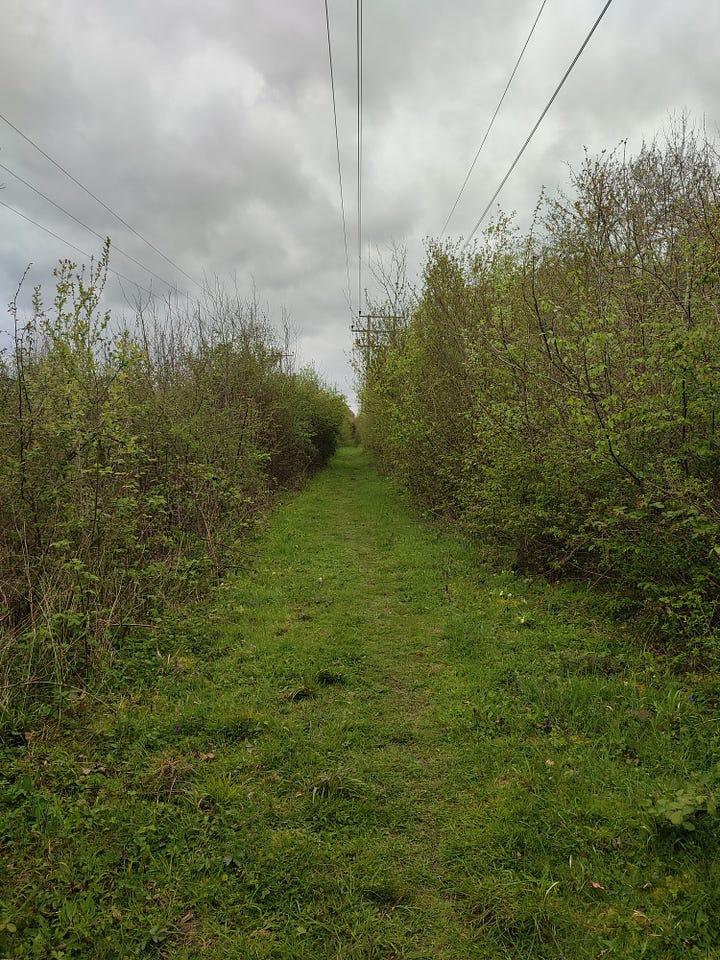
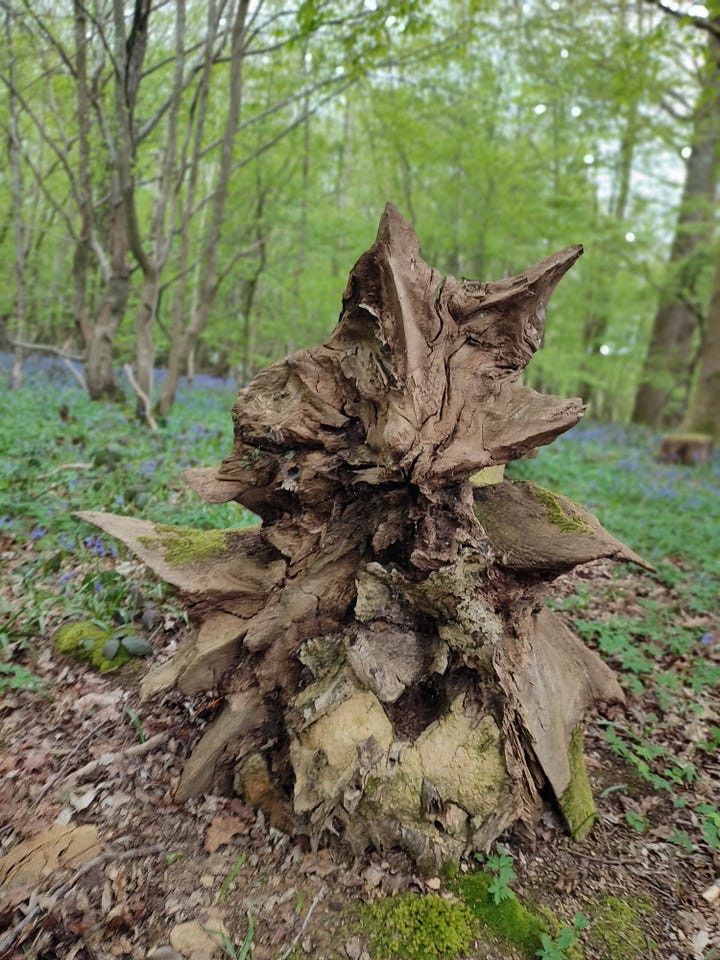
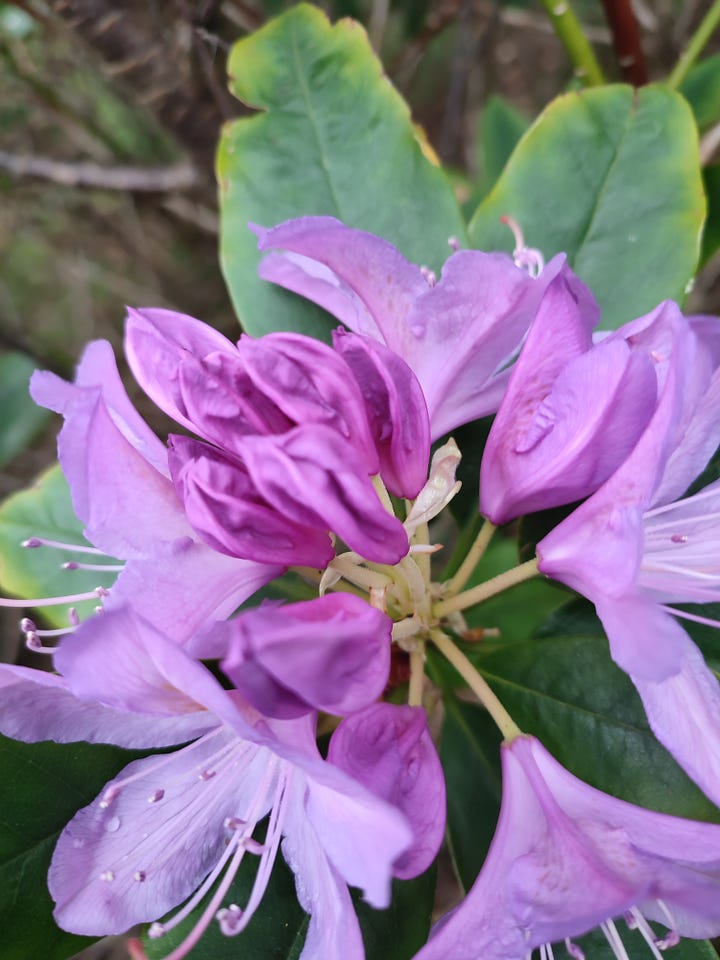

Beyond the nightingales, acknowledging the lasting impact of colonialism can guide us towards a more just future. This includes supporting initiatives aimed at reparations, like debt relief and investment in infrastructure and education for West African nations. It also means educating ourselves and others about the legacies of colonialism and how we can actively work to dismantle the systems of injustice it created.
Interestingly this article in the Observer was published today: ‘I’m not afraid of anybody now’: the woman who revealed links between National Trust houses and slavery – and was vilified”
Let me know your thoughts on this. I'd be interested in further discussions about this complex issue and how we can take action. We need a Nightingale Revolution.
Next week my letter will be from Antwerp. Until then, fly high and sing to the stars.
With love, as always
Serena xxx



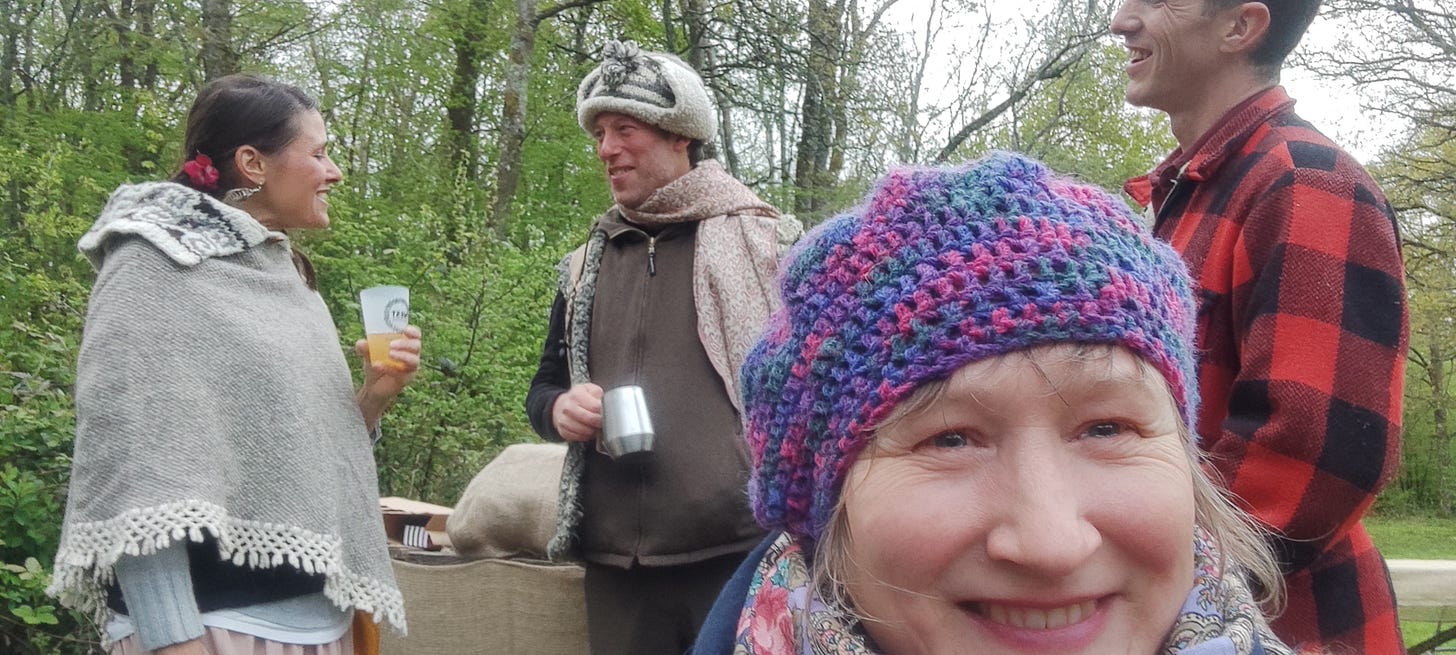
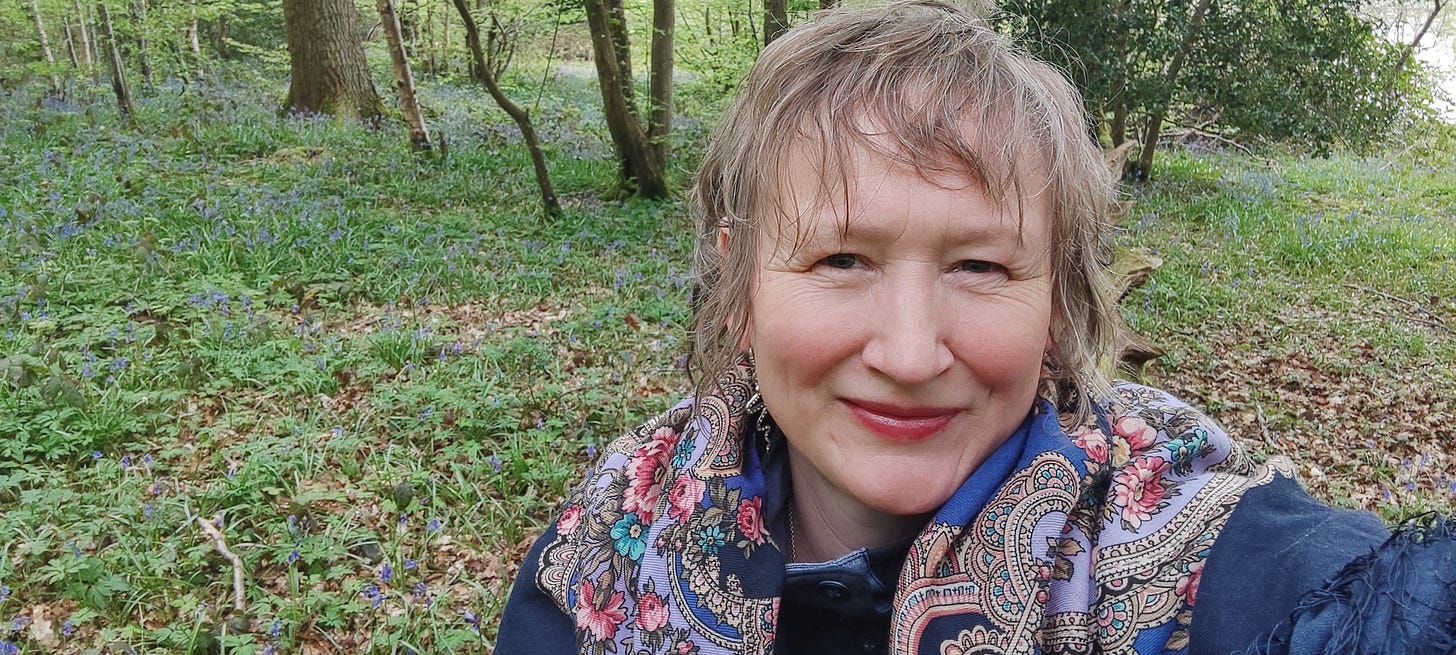
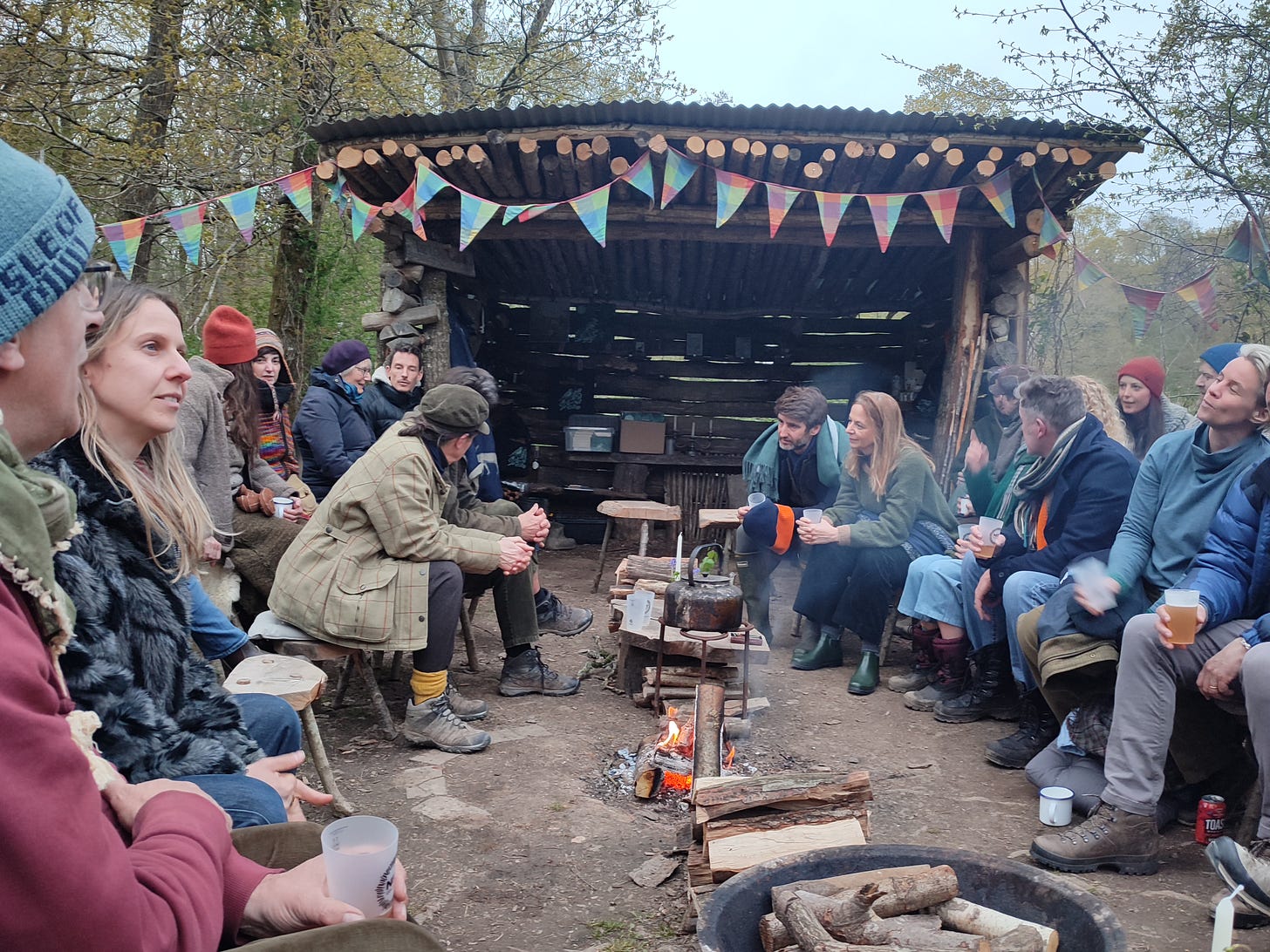
So glad you went. I was going to go. And still want to. xx
Am off to Wales this week for a month so will have to be next year...xx